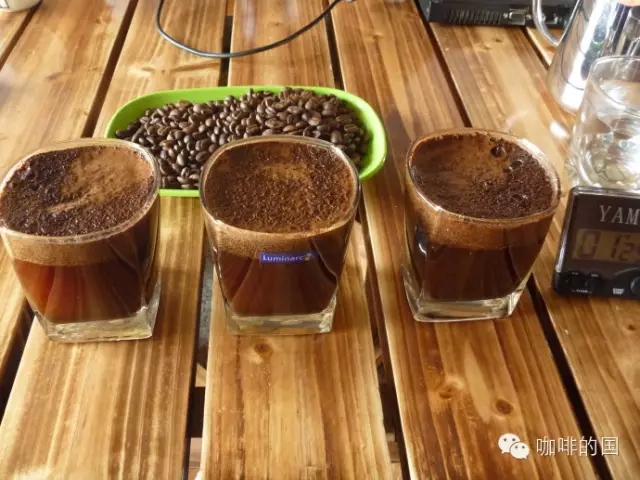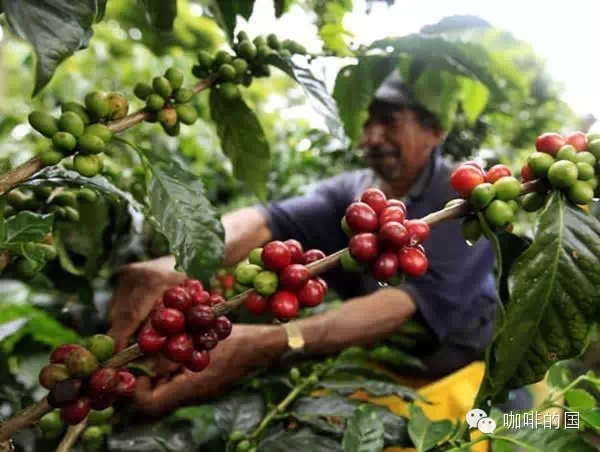The birthplace of coffee, Ethiopia Solar Yega Chuefei aricha native species G1
Ethiopia (Ethiopia)
The birthplace of coffee-Ethiopia.
The coffee tree originated in Ethiopia, which was originally a wild plant here. The name "coffee" comes from the Ethiopian town of "Kaffa". In fact, many coffee trees in Ethiopia are still wild plants, and the coffee grown on this coffee tree is full-grained and slightly alcoholic. Humans may have known how to grow coffee trees as early as the 9th century, but who, how and why is still a mystery. The local legend in Ethiopia is that coffee began to be used by monks to keep a clear head when praying at night.
Today, Ethiopia is an important coffee producer, with about 12 million people engaged in coffee production and a major exporter of Arab coffee beans in Africa. The high-quality coffee here is of excellent quality and is worth looking for.
Various forms of coffee cultivation can be found in Ethiopia: everything from wild coffee forests and semi-developed land to traditionally operated plots to modern plantations. About 50% of the coffee is grown more than 1500 meters above sea level.
Harrar coffee is the highest growing area of all coffee in Ethiopia. Hara coffee can be divided into long coffee beans and short coffee beans, of which long coffee beans are the most popular. It has a soft taste, with wild flavor of wine, and slightly sour taste, unforgettable after drinking. Djimmah Coffee is wild at an altitude of more than 1200 meters and is sold under two brands: Limu Coffee and Babeka Coffee. Other coffee names include Sidamo coffee from central China, which is sold under the brand name Yirgachaffe, and coffee from Lekempti, which has a unique flavor. Jima and Cedamo beans have an unpleasant appearance but a good taste.
One of the rarest Ethiopian coffee beans on the market is Ilgachafi, which is exported to Japan and Europe but is rarely seen in the United States. This is because Dallmeyer, the German coffee roaster owned by Nestl é, has established close ties with the growers of Ilgachafi coffee, thus obtaining the largest single supply of the coffee beans.
The flavor of Ethiopian coffee is difficult to describe. It is neither strong nor sour. Therefore, it is not suitable for deep baking, otherwise it will easily lose its characteristics.
In terms of characteristics, Ethiopian coffee is somewhat similar to the famous mocha coffee. Of course, high-quality Ethiopian coffee can be compared with the best coffee from all over the world, including its considerable price.
Ethiopia has the highest domestic consumption of coffee in Africa. In the countryside, it is often drunk with a vanilla called Health of Adam: the new coffee beans are roasted and mashed with the vanilla, then mixed and drunk in a small teacup, which is often served with pancakes to extract the sweet pepper flavor from the pancakes.
The coffee industry is managed by the Ethiopian Coffee Company (the Ethiopian Coffee Marketing Corporation, or ECMC), which controls 90 per cent of the export market. It is possible that control of Ethiopian coffee companies is about to be relaxed to give greater local power, a move that will benefit the coffee industry as a whole, especially individual businessmen. Ethiopian coffee is sold at daily auctions, mostly exported to Germany, the United States, France and Japan.
This batch is produced at the Kebel Aricha processing plant, where there are about 650,700 small coffee farmers who send ripe coffee berries here for processing in exchange for cash. After the treatment plant selects the available berries, they are directly exposed to the sun on the scaffolding and are turned every 2-3 hours in the first few days to prevent overfermentation. After four to six weeks of sun exposure, the workers will scrape off the outer pulp with a machine according to the weather and temperature, and then transport it to addis for storage. Usually, sun-treated beans are stored in the form of shell beans, and they are not shelled until they are exported to ensure the quality of raw beans. This batch of Sunshine Eriga is rated as G1 by ECX. It is excellent in appearance, consistency, freshness, dry aroma and flavor of raw beans. You can't miss those who like bright acidity and strong berry flavor.
Flavor description: light fermented wine, jujube, sweet orange tone, dark berries, litchi, carambola, peach, peach, longan jujube, honey sweet, cocoa with a hint of spice, body thick and lasting
About Project Origin
The winner of the Sasa Sestic,2015 World Barista Competition and his business team ONA Coffee started a raw bean shopping program called Project Origin three years ago. The project works directly with coffee growers in poor countries and regions to improve their production conditions and give them a purchase price 20% higher than the fair trade price.
The original intention of the project also includes strengthening the links between roasters and coffee farmers and guiding coffee farmers to grow high-quality coffee beans. So far, Sasa has established relationships with coffee growers from eight countries, including Brazil, Panama, India, Ethiopia, El Salvador and Costa Rica.

Important Notice :
前街咖啡 FrontStreet Coffee has moved to new addredd:
FrontStreet Coffee Address: 315,Donghua East Road,GuangZhou
Tel:020 38364473
- Prev

The Arabica coffee tree is grown in Cameroon and its variety is Jamaica's Blue Mountain Coffee.
Cameroon is suitable for deep roasting coffee beans for espresso. The cultivation of Arabica coffee trees in Cameroon (Cameroon) began in 1913 as the Blue Mountain Coffee from Jamaica, but the country also produces large quantities of Robbins coffee. The quality and characteristics of Cameroon coffee is similar to that of coffee from South America. The best coffee in the country comes from Bamileke and Pakistan in the northwest.
- Next

Ivory Coast is one of the largest producers of coffee in the world. It is the fifth largest coffee producer in the world.
C ô te d'Ivoire is one of the largest producers in the world in terms of quantity. C ô te d'Ivoire te dlvoire has never produced the best quality coffee, and it rarely comes from Arabian coffee trees. In the early 1980s, it was the world's third-largest coffee producer, with an annual output of 5 million bags. Even today, it is still the fifth largest coffee producer in the world, with an annual output of 440
Related
- Does Rose Summer choose Blue, Green or Red? Detailed explanation of Rose Summer Coffee plots and Classification in Panamanian Jade Manor
- What is the difference between the origin, producing area, processing plant, cooperative and manor of coffee beans?
- How fine does the espresso powder fit? how to grind the espresso?
- Sca coffee roasting degree color card coffee roasting degree 8 roasting color values what do you mean?
- The practice of lattes: how to make lattes at home
- Introduction to Indonesian Fine Coffee beans-- Java Coffee producing area of Indonesian Arabica Coffee
- How much will the flavor of light and medium roasted rose summer be expressed? What baking level is rose summer suitable for?
- Introduction to the characteristics of washing, sun-drying or wet-planing coffee commonly used in Mantenin, Indonesia
- Price characteristics of Arabica Coffee Bean Starbucks introduction to Manning Coffee Bean Taste producing area Variety Manor
- What is the authentic Yega flavor? What are the flavor characteristics of the really excellent Yejasuffi coffee beans?

